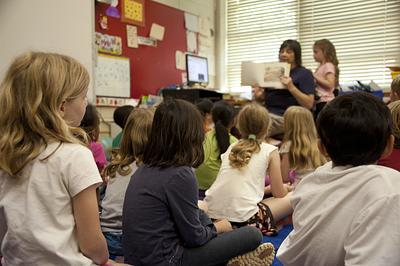For auld lang syne, my jo,
For auld lang syne,
We'll tak a cup o' kindness yet,
For auld lang syne
In Scotland, January is the month of Robert Burns. From singing ‘Auld Lang Syne’ as the clock strikes midnight on Hogmanay to cutting open the haggis on Burns Night, the first month of the year is a time to celebrate Burns, his poetry, and his language. Across the country, schools seize the opportunity to immerse young learners in Scots poetry through Burns’s work.
As much as we love Scotland’s national bard, this January we’d like to challenge you to take a wider view of Scotland’s linguistic and literary history. How much do you teach your children about Scots, outwith the looming figure of Rabbie Burns?
A thriving language
Scots is legally recognised as one of three official languages of Scotland, alongside Gaelic and English. Long before Burns was born, Scots was the official language of the Scottish courts and universities. Today, Scots remains a major part of Scotland’s linguistic landscape, with the 2011 census recording that 1.5 million people identified as Scots speakers.
Education Scotland recognises the importance of promoting the use of Scots in the classroom(this link will open in a new window), both to teach learners about their culture and heritage, but also to show them how their own language use fits in with this historical identity. They view the study of Scots in the classroom as a vital part of ‘valuing the languages which children and young people bring to school’, which means engaging with the modern language spoken by young people today as much as the poetic language of Burns.
Today, secondary learners can engage with Scots year-round through the SQA Scottish Studies and Scots Language Awards, which allows schools to take a multidisciplinary approach to the language, choosing between literary, historical and linguistic models depending. Education Scotland and the Open University have recently developed a GTCS accredited professional course in Scots language teaching(this link will open in a new window) to better equip teachers to feel confident in incorporating Scots into their teaching practice. There’s a mounting body of anecdotal evidence from teachers (nursery, primary and secondary) that shows the measurable benefits for learners who are allowed and encouraged to read, write and even speak their native tongue in their classroom environments.
Discover Scots beyond Burns
If you’re a teacher or a parent looking for where to get started with Scots beyond Burns, the good news is that there’s a wealth of resources already out there to draw upon.
For historical and literary insights, you might wish to start with the History of Scots resource(this link will open in a new window) from Education Scotland, which can help to show learners how their own language fits with over 400 years of Scottish literary and linguistic history. The National Library of Scotland’s Wee Windaes project(this link will open in a new window) provides a helpful way into these Older Scots texts for new learners, while the Read Older Scots project(this link will open in a new window) produces classroom and online resources to help teachers introduce Older Scots back into their classrooms, and to help readers access this important (and fascinating) aspect of Scotland’s culture and heritage.
If you’re more interested in Scots as a modern language, we have a wealth of resources from current authors which can help you to encourage your learners to embrace Scots in their creative writing, including tips from Graeme Armstrong, William Letford, and Matthew Fitt, as well as our Creative writing in Scots resource. We also have a broader resource on Using Scots in the classroom, which offers ideas for reading, writing, listening and talking activities to introduce Sots into your classroom.
Changing perceptions
In the past, children were discouraged from using Scots in school, and the status of Scots in our culture and education is still in the process of recovery because of this. Attitudes towards Scots have changed hugely in recent decades and more change is on the horizon.
The Future of Scots Symposium(this link will open in a new window) released its final report in spring 2023, which highlighted the need to continue to empower both native and new Scots speakers across the whole of the education system, as well as the importance of Scots in preparing young people for life after school. Oor Vyce(this link will open in a new window) continues to campaign for the legal recognition of Scots in public and educational life, and the consultation for the new Scots Languages Bill is currently ongoing – which may provide yet more recognition of the important role Scots plays in learning and literacy.
Scots is a vital part of Scotland’s past, present, and future culture and identity – it’s no just for Burns Night anymore!
Scottish Book Trust is currently in the process of surveying primary and secondary school teachers on their engagement with the Scots language in the classroom. If you’d like to take part, you can access the survey below.
(this link will open in a new window)Take the Scots in the Classroom survey
